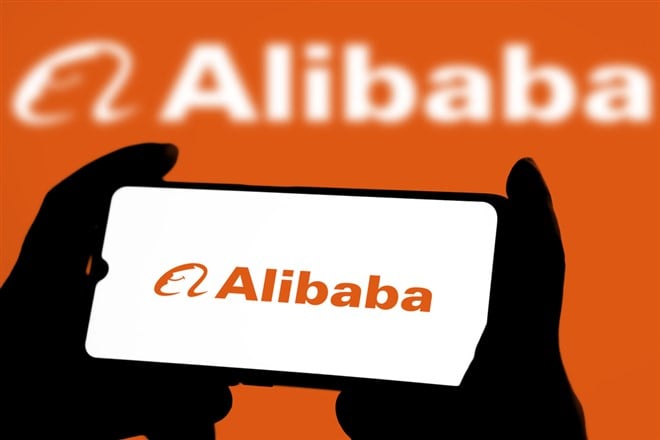Ticker Reports for October 23rd
Chinese Stocks Cool Off: Time to Buy the Dip in These 2 Stocks?
Following the government's announcement of significant economic stimulus measures, Chinese stocks recently experienced a major rally, with some soaring as much as 100% from their 52-week lows. However, the surge has since cooled, with a pullback emerging over the past two weeks, raising the question: Is this dip a great buying opportunity, or should investors remain cautious? While the rally has ignited optimism, investors must now assess whether the market still offers value or if further volatility and potential downside lie ahead.
Stimulus Fuels Optimism
For months and, in some cases, years, Chinese equities had underperformed due to weak economic growth, elevated interest rates, and a sluggish property market. However, the narrative shifted when Beijing introduced policies to stimulate the economy, including mortgage rate cuts and easing property purchase restrictions in major cities like Guangzhou, Shanghai, and Shenzhen. These measures were designed to breathe life into China’s struggling real estate market, a key component of its economic engine.
Adding to the bullish sentiment, the People’s Bank of China announced that banks would lower mortgage rates for existing home loans by the end of October. Recent economic data has also contributed to the optimism, with China's Q3 GDP expanding by 4.9% year-over-year, surpassing analyst expectations and signaling that the government's interventions are beginning to bear fruit.
As a result, Chinese stocks rallied sharply, with the iShares China Large-Cap ETF (NYSE: FXI) gaining over 24% so far this quarter, while Alibaba (NYSE: BABA) and JD.com (NASDAQ: JD) posted gains of 32% and 56%, respectively. However, with a pullback now underway, investors are weighing whether this correction provides an attractive entry point or if it’s a warning of further downside.
Two Chinese Stocks Worth Buying on the Dip
Alibaba Group Holding
Alibaba (NYSE: BABA) has emerged as a standout performer, surging 31% in the past month and turning its year-to-date (YTD) performance positive with a 38% gain. After a prolonged period of underperformance, Alibaba’s recent breakout has seen it reclaim critical resistance levels, offering long-term investors renewed optimism.
From a valuation perspective, despite its recent surge, Alibaba remains attractive with a forward P/E ratio of 11.17, reflecting both value and growth potential. Its recent pullback of almost 15% from its 52-week high offers an appealing dip buy opportunity. If the stock can continue to find support near the all-important $100 mark, a higher low and continuation to the upside might shape up.
Alibaba’s Q2 results showed revenue growth of 4%, with adjusted earnings per share (EPS) at $2.26, beating expectations. The company also declared a two-part dividend, including a $1 annual payout per American Depository Share (ADS) and a one-time dividend of $0.66 per ADS, costing $4 billion. Its next earnings report is scheduled for November 21, which could provide additional insight into its trajectory.
iShares China Large-Cap ETF
For investors seeking diversified exposure to Chinese equities, the iShares China Large-Cap ETF (NYSE; FXI) offers a broad portfolio of leading Chinese companies across financials, technology, and consumer goods sectors. FXI’s top holdings include significant players such as Alibaba, JD.com, Tencent, and Baidu, which provide exposure to various industries that drive China’s economy.
Technically, FXI remains in a bullish trend, having broken out from its 52-week lows in September. The ETF has pulled back approximately 15% from recent highs, but this measured correction, retracing about half of its breakout move, could present a strategic buying opportunity. With the ETF finding support in the low $30s and continuing to attract strong inflows, FXI appears well-positioned for investors seeking broad exposure to China’s recovery.
$20 = Ounce of Gold?
I've discovered a way to get exposure to MORE than an ounce of gold... for under $20.
It's not bullion. It's not ETFs. And it's certainly not crypto.
Goldman Sachs Highlights 3 Top Short Squeeze Stocks to Watch
The stock market can trap investors who get either too long or too short on a specific company or trend. Whenever this happens, the market has a way of correcting these imbalances through sharp rotations. Those who are too long on a stock or trend and see a sharp selloff will likely run for the exit, creating additional selling pressure on the trend.
The inverse is also true for short sellers. When too many people—and too much capital—go on the short side, any time there is a sharp rally, these short sellers are forced to exit their positions, which involves buying back the stock these short sellers had borrowed. Without diving into the weeds of what short selling is, all investors need to know is that closing large short positions means buying pressure for the underlying stock.
Knowing this, it would be beneficial to pay attention to the new list of top 20 potential short squeezes in the market today, compiled by analysts at Goldman Sachs. These are the stocks that could make a run when and if short sellers start to cover their positions, names like Chewy Inc. (NYSE: CHWY) for the consumer staples sector, Expedia Group Inc. (NASDAQ: EXPE) for new travel trends, and finally First Solar Inc. (NASDAQ: FSLR) for an alternative to the energy sector.
Why Chewy Stock Isn't a Good Bet for Short Sellers Right Now
Most investors tend to treat Chewy stock as part of a technology sector name or even a consumer discretionary player. However, this couldn't be further from the truth. No matter whether the economy is booming or busting, pet owners will likely always find room in their budgets to take care of their pets' needs.
With this in mind, it shouldn't be surprising to see Chewy's financials show a return on invested capital (ROIC) rate of up to 28.5% as of the past 12 months. This is only achievable by a combination of pricing power and stable cash flows built into the business model itself.
Considering that the stock now trades at a low 72% of its 52-week high today, it could be regarded as part of a group of value stocks that may outperform in the coming quarters, especially as more investors keep discounts in mind during these uncertain market conditions.
Wall Street has a similar opinion about Chewy stock. Analysts at TD Cowen recently initiated coverage on the company with a "Buy" rating, this time placing a $38 a share price target on the stock. Chewy would need to rally by as much as 35.2% from where it trades today to prove these new valuations right.
If the company can deliver this sort of upside, it could trigger a significant short squeeze, mainly since the short interest in Chewy is as high as $450 million today.
Expedia's Recent Momentum Could Soon Spark a Major Short Squeeze
Over the past 12 months, shares of Expedia Group stock have rallied over 72% to outperform most peers in the industry. Now that the stock trades at up to 98% of its 52-week high today, investors can see enough momentum to potentially bring on a short squeeze.
This is especially the case considering that the company carries up to $950 million in short interest, which could return to the stock if these short sellers are forced to cover their positions. As a potential catalyst, markets can consider the Federal Reserve (the Fed) 's recent start to cut interest rates.
Lower interest rates could increase travel and leisure demand for stocks like Expedia. Investors can consider these trends when considering the record numbers seen by the Transportation Security Administration (TSA) in recent weeks.
To solidify the trends helping investors decide whether to back Expedia Group tock or not, investors can see the recent institutional buying coming from Pacer Advisors, which boosted its positions by as much as 36.8% as of the past quarter, bringing its position to $334.4 million today.
Inflation Trends Could Boost Solar Energy Demand and Trigger a Short Squeeze in First Solar Stock
Now that Stanley Druckenmiller and Paul Tudor Jones, arguably some of the best investors and traders in history, have agreed to short the bond market, investors have something else to consider.
This new view suggests that inflation might not only go back up but might actually stay higher for longer than most expect. This includes the price of commodities as well, where potentially higher oil prices could cause fuel costs to rise so much as to make alternative sources more attractive.
This is where First Solar Energy comes into play, as solar becomes an attractive alternative. This new potential demand brought those at Bank of America to reiterate their “Buy” rating for the stock, this time accompanying their views with a $321 share price target.
Investors now face a potential upside of 59.4% from where the stock trades today, which puts short sellers in danger of triggering a major short squeeze. This is especially the case considering that the short interest in First Solar stock has risen to $1.2 billion today.
Charles Payne Wants You Prepared for Q4
Charles Payne Wants You Prepared for Q4
Because as we look toward 2025, there's no denying that market volatility, inflation, and recession fears are top of mind for every investor
Now more than ever, it's crucial to have a solid plan for navigating uncertainty and coming out ahead.
Walmart is Up 56% YTD, Is it Still a Top Consumer Staples Stock?
It's been a good year in the stock market so far; however, one group of companies that hasn’t performed as well as others are those in the consumer staples sector. This includes companies making and selling essential products like food. The Consumer Staples Select Sector SPDR Fund (NYSEARCA: XLP) has provided a total return of only around 15% this year, while the S&P 500 is nearly at the 23% mark.
However, some consumer staples stocks have massively outperformed the market this year. That includes the retail giant Walmart (NYSE: WMT). It’s the largest company in its sector, with a market capitalization of around $660 billion. So, is Walmart a set-it-and-forget-it investment that will make investors happy for years to come, or is the stock running out of steam after its massive uptick this year?
Walmart: Winning the War in Groceries
Walmart is an omni-channel company. It sells to customers via its retail stores and its e-commerce site. Its U.S. segment made up around 68% of total revenue, while its international and Sam's Club segments accounted for 18% and 14% respectively. I’ll use the company's U.S. segment as a proxy for the overall business to understand how it breaks down revenue by product type. It doesn't report revenue by product type consistently across segments. Groceries made up 60% of U.S. revenues, general merchandise made up 26%, and health and wellness made up 12%. Its “other categories” made up the rest.
This breakdown is similar to Costco (NASDAQ: COST), where 54% of revenue came from food, and 25% from "non-food." Where Walmart has been winning is in taking grocery market share from its competition. The company increased its overall grocery market share by 1.5%, up to 23.6%, from 2021 to 2023. And it is doing so not only on an overall basis but also when it comes to online grocery sales. This isn’t overly surprising, given the rapid increase in inflation that has hit food particularly hard over the past few years.
Since Sept. 2021, grocery prices have increased over 17%. This outpaces the 15% when looking at all items. Due to this, as well as overall low consumer sentiment post-pandemic, consumers are becoming more scrupulous about how they spend money. This benefits firms like Walmart greatly. The massive scale of the company allows it to keep its prices lower compared to the competition, driving consumers prioritizing savings to the company. The nearly 10% increase in online grocery sales market share from Q2 2021 to last quarter is evidence of this.
Walmart Can Sustain Advantage Through Value and Innovation
One reason I continue to like Walmart going forward is due to the cost savings it can continue to offer customers. Despite positive economic indicators, consumers still have sustained a much less positive view of the economy. These indicators include historically low unemployment, a strongly rising stock market, the Fed beginning to drop rates and slowing inflation.
In my view, this is negative sentiment largely due to the already embedded inflation in the economy that resulted after the pandemic. Consumers don’t notice the fact that prices are increasing slower than they were the month before; they notice that they are paying 17% more for groceries than they used to. Until customers actually start to feel wealthier, they likely won’t move to stores with higher-quality goods at a higher price.
Walmart also differentiates itself through its willingness to enter different markets. When it comes to consumer staples companies, innovating the business often isn’t the name of the game, but that’s not so at Walmart. The company is expanding into many different areas to grow its business. The growth of its e-commerce business allows it to sell ad space, a much higher-margin business than groceries. It is also venturing into the third-party marketplace arena. This allows the company to earn commissions on products other parties sell and get more data on what customers are buying.
Walmart Remains a Top Pick
As with many companies leading their industries, Wall Street analysts' price targets have continued rising at Walmart as the company’s stock price rises. I am a big believer in this firm that is continually offering customers great value, and also looks for ways to improve its business beyond the standard strategies of many retail consumer staples companies. It’s one of my favorite names in this sector long-term.






0 Response to "🌟 Chinese Stocks Cool Off: Time to Buy the Dip in These 2 Stocks?"
Post a Comment